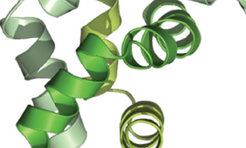Conservation of Protein Structure and Function
Birte Hernandez Alvarez
We study structure-function relationships in proteins from an evolutionary perspective. We use a wide range of biophysical, microbiological and molecular biological methods to structurally characterize proteins, identify peculiarities and analyze their effects on stability and function. By comparatively analyzing the sequence, structure, and function of prokaryotic and eukaryotic homologs, we are able to identify and understand the evolutionary processes that have shaped these proteins as we know them today.
Objectives

We work primarily with prokaryotic proteins as they originate from single cell systems and, unlike their usually more complicated eukaryotic counterparts, have a clear protein domain composition, which considerably facilitates structural and functional characterization. Our work is focused on very different projects. In the first, we are investigating structural features of coiled-coil domains that arise from different types of insertion or deletion of amino acid residues.
The second project focuses on structural and functional studies of proteins possessing multi b-barrel domains that are found in the outer membrane of the bacterial cell wall and eukaryotic organelles and have evolved from single-barrel proteins by gene fusion and duplication.
The third project compares prokaryotic histone-like proteins with their eukaryotic homologs with respect to similarities and differences in their structure, DNA binding mode and specificity, and in vivo function.
